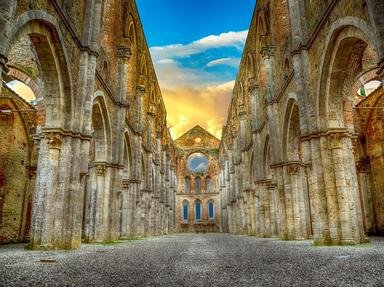Quiz Answer Key and Fun Facts
1. Oddly enough, the first part of the armor a knight would put on was actually the shoes. Which of these is the name given to the shoes of armor?
2. Knights also needed to protect their lower legs; an enemy would slash just about anywhere, so armor even that low was important. Which of these pieces of armor would offer the best protection for the calf?
3. As a knight works his way up while he dresses in his armor, the next area to cover is the upper legs. Which of these would be used to protect the thigh?
4. Cover for the hands, of course, was just as important a piece of armor as any. What is the name of the glove used by a knight for hand protection?
5. The lower arm was another area with its own piece of armor. What is the name of the piece of shining armor that protected the forearm?
6. Many different devices could be used to protect the shoulder, but some of them left the armpit exposed. In this instance, an additional piece of armor was required to protect the armpit. Which piece was designed for this one single purpose - to protect the armpit?
7. Leaving the belly exposed would be a bad idea, so before putting on any breastplates a knight would have to protect his gut as well. Which of these pieces was used for such a purpose?
8. Another piece of armor a knight should put on is the very important breastplate. Which of these is designed to cover the front part of the body, though the word is sometimes used in reference to both the breastplate and the backplate?
9. The last thing a knight should put on is the all-important helmet. Typically, a helmet covered the head and face, and sometimes the neck (though other armor covered the neck as well).
Three of these are full helmets to protect the knight in shining armor. Which of them, though, is simply a skull cap, and would do absolutely nothing to protect the face?
10. The final item needed to complete the knight's suit of armor was a shield. What was generally put on the shield to decorate it for each knight?
Source: Author
salami_swami
This quiz was reviewed by FunTrivia editor
bloomsby before going online.
Any errors found in FunTrivia content are routinely corrected through our feedback system.

